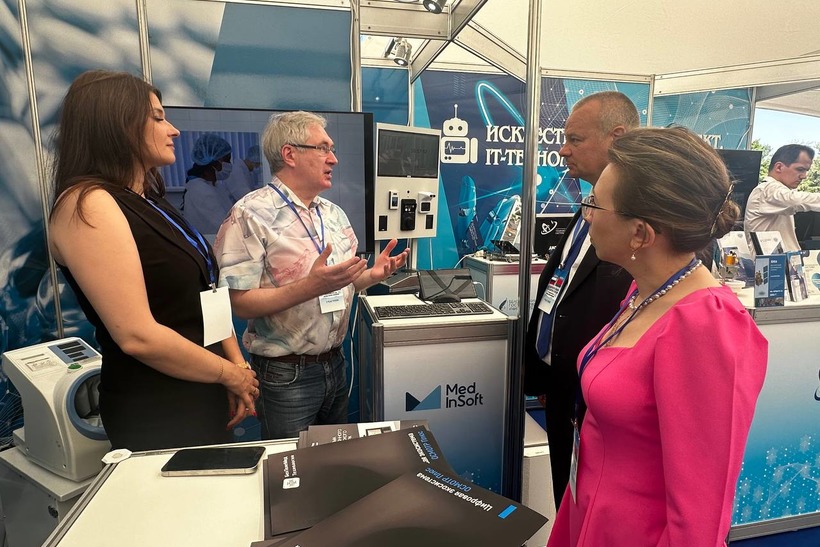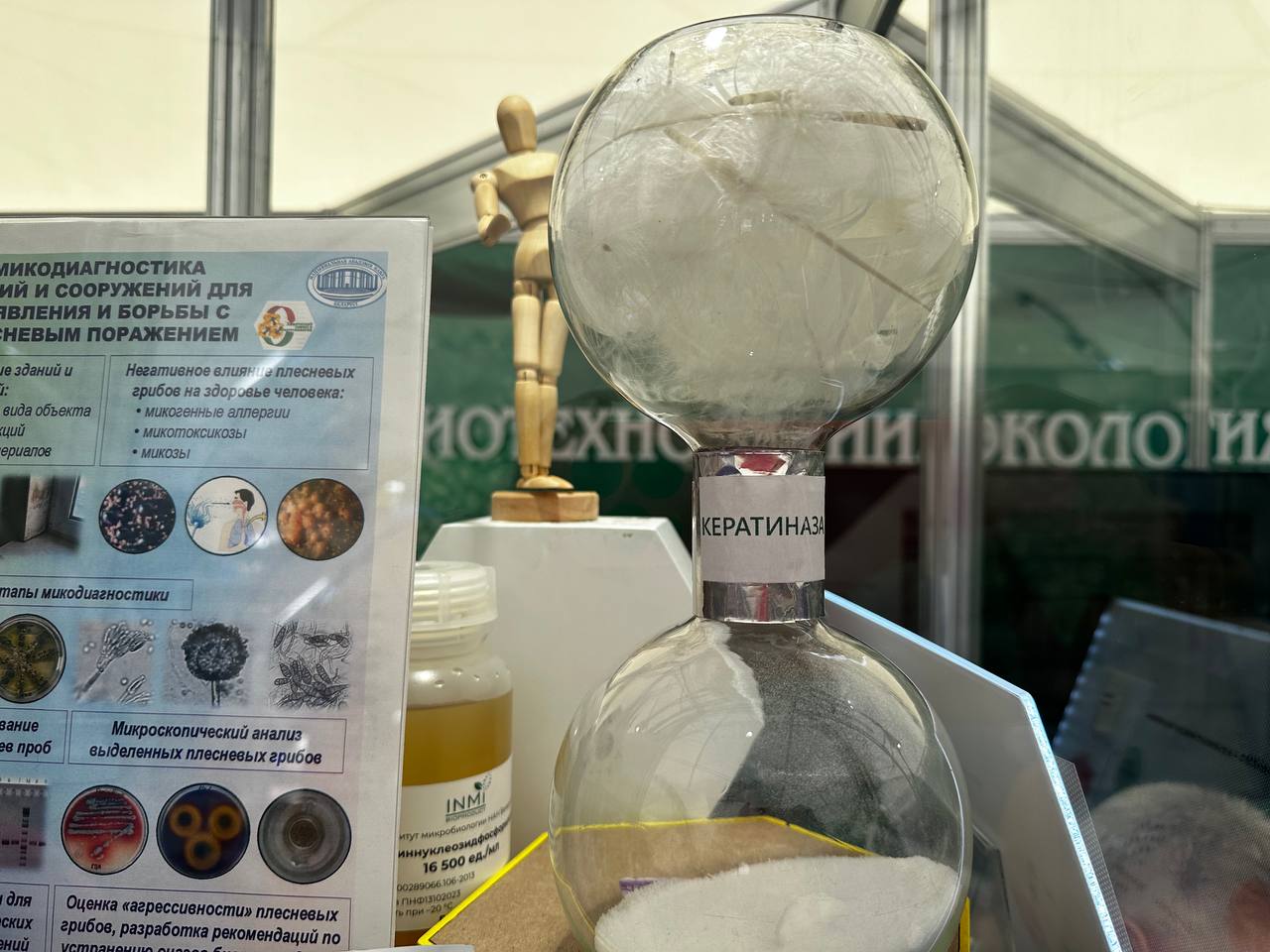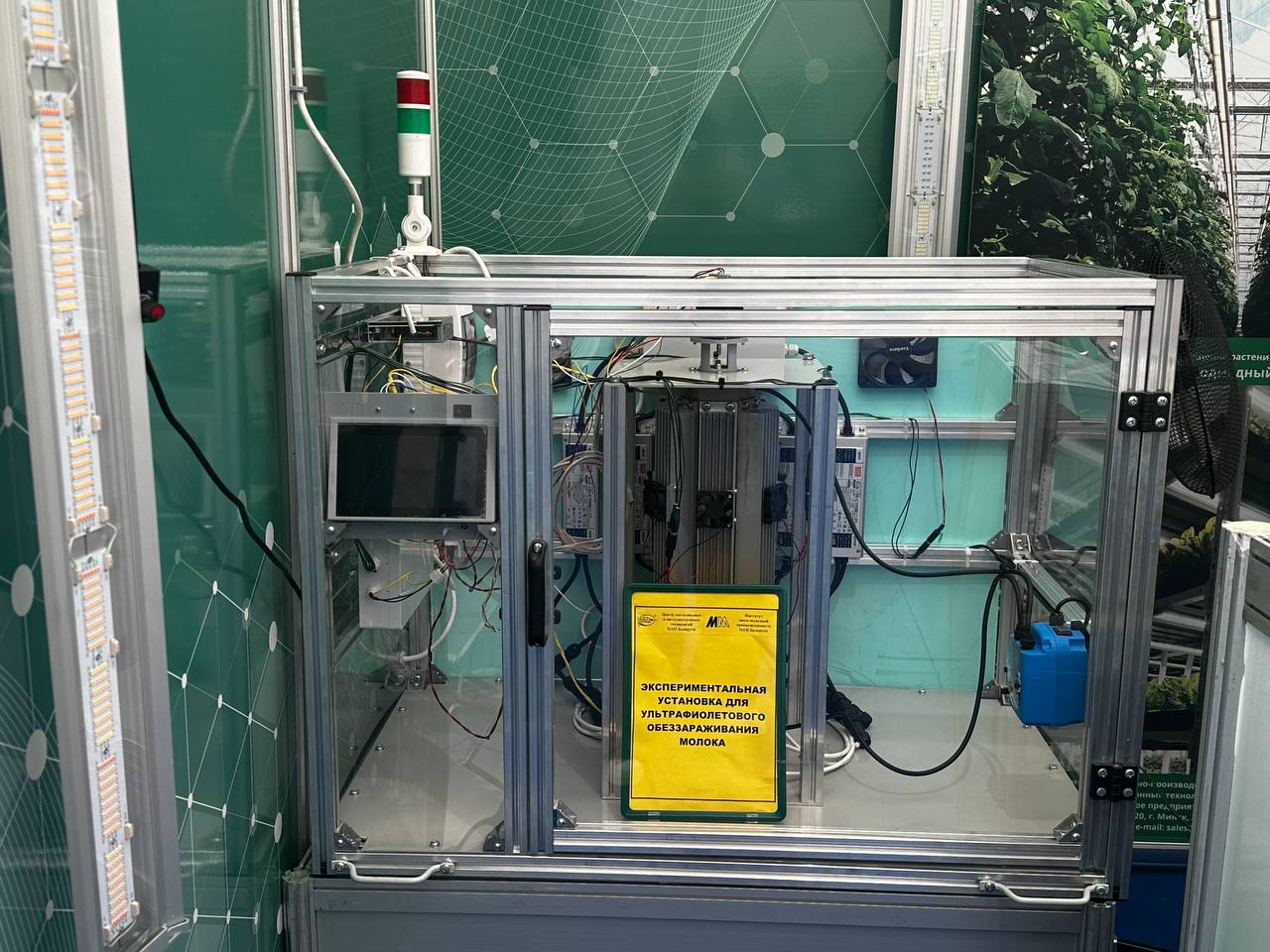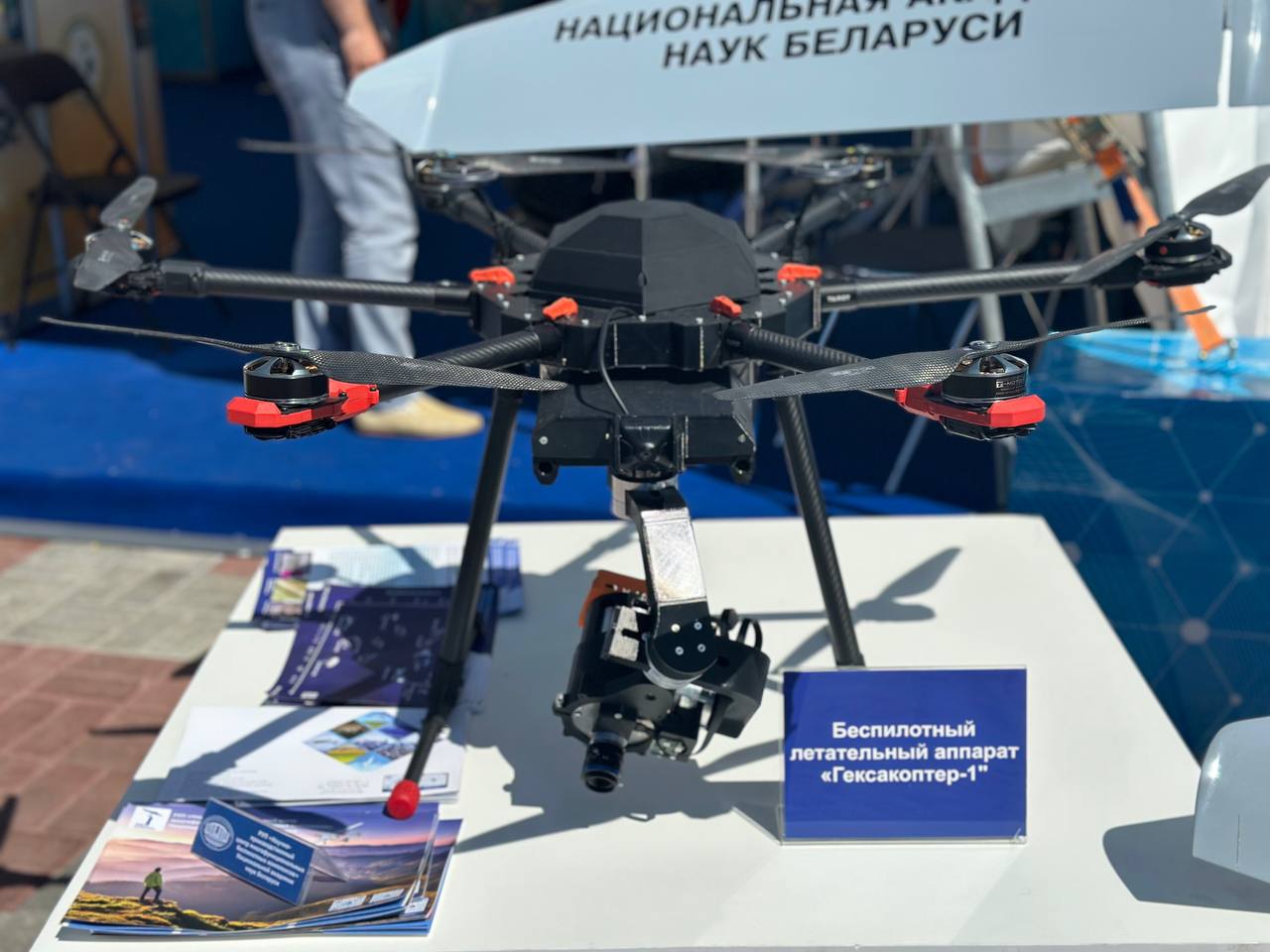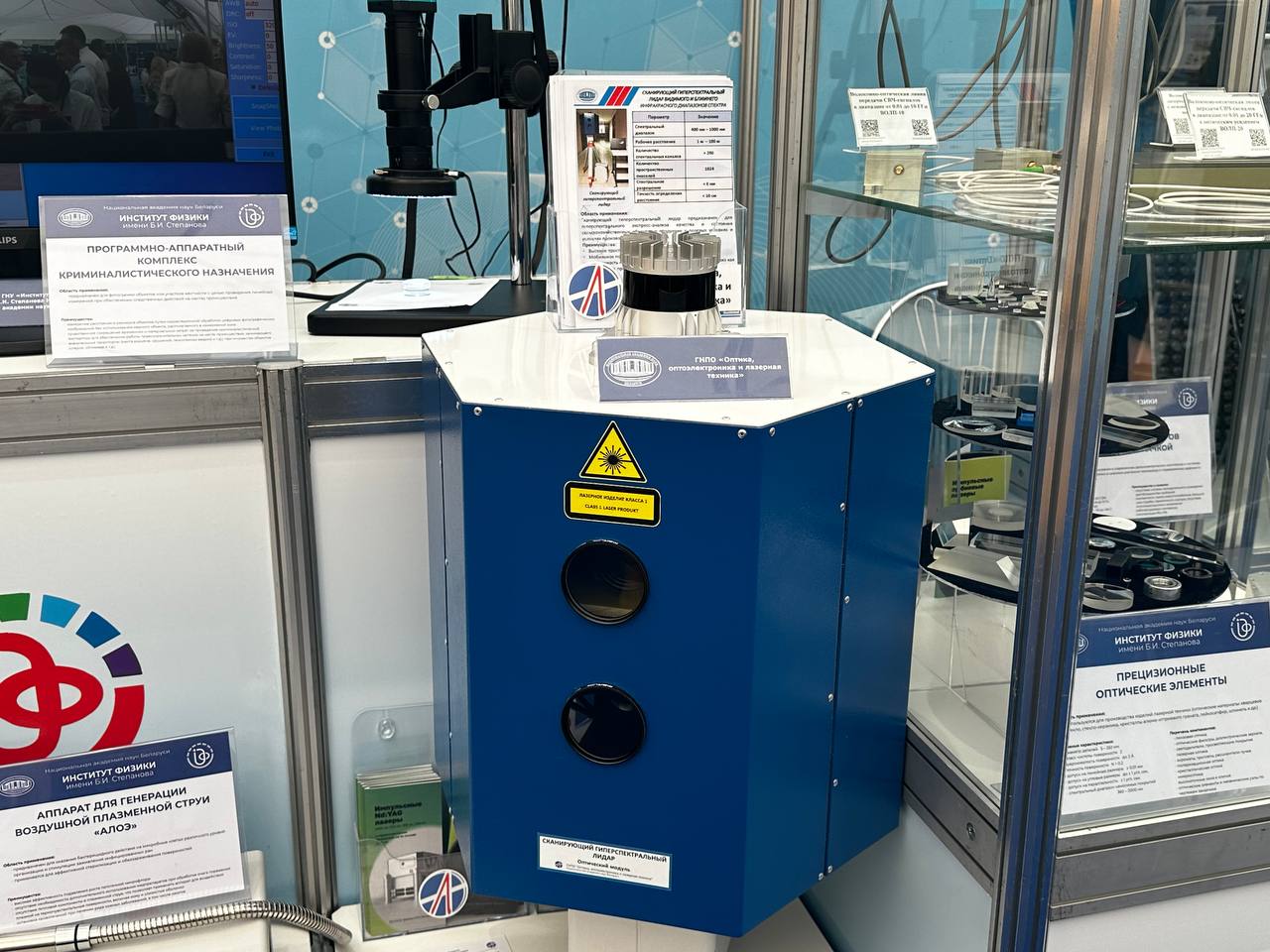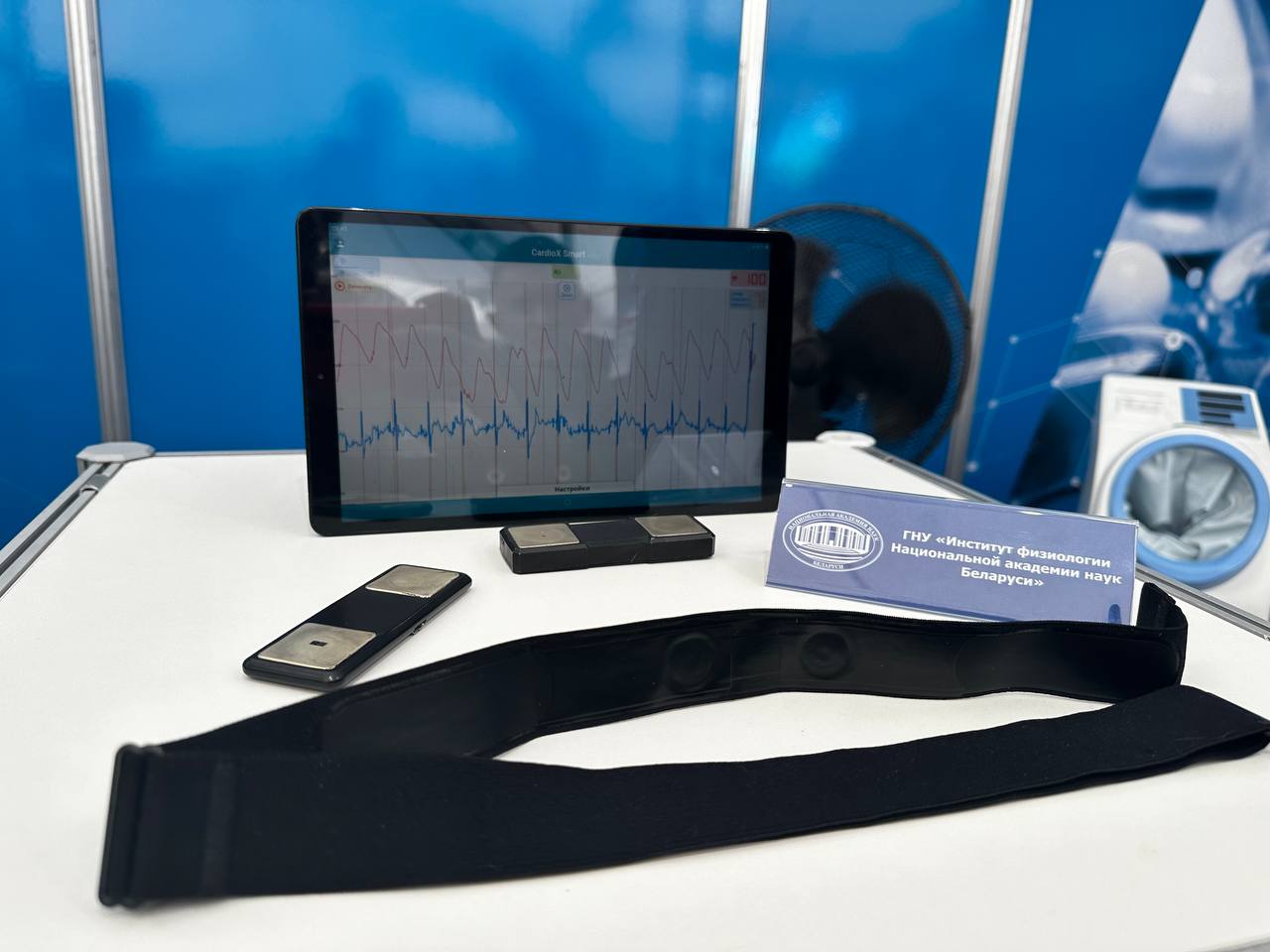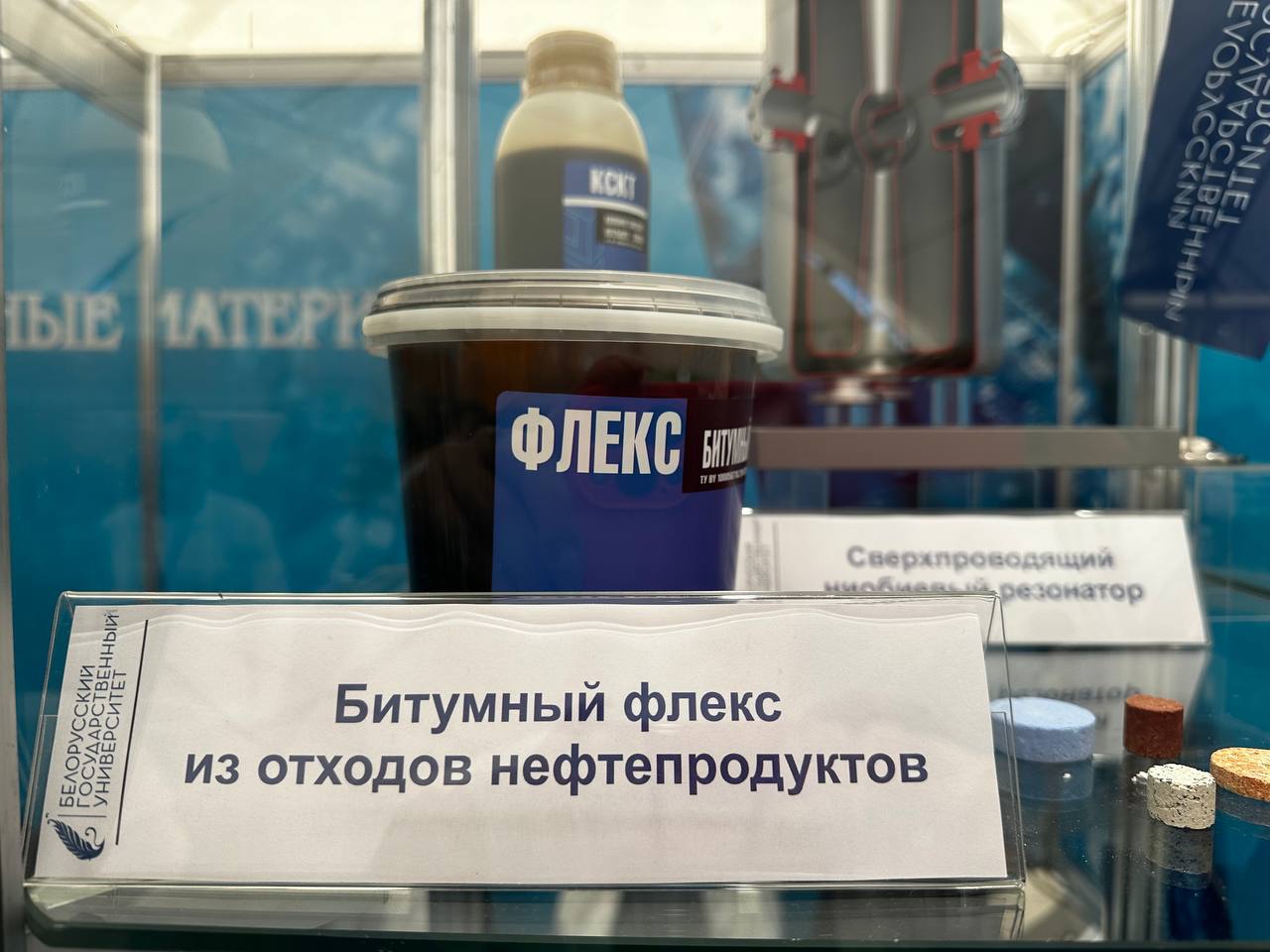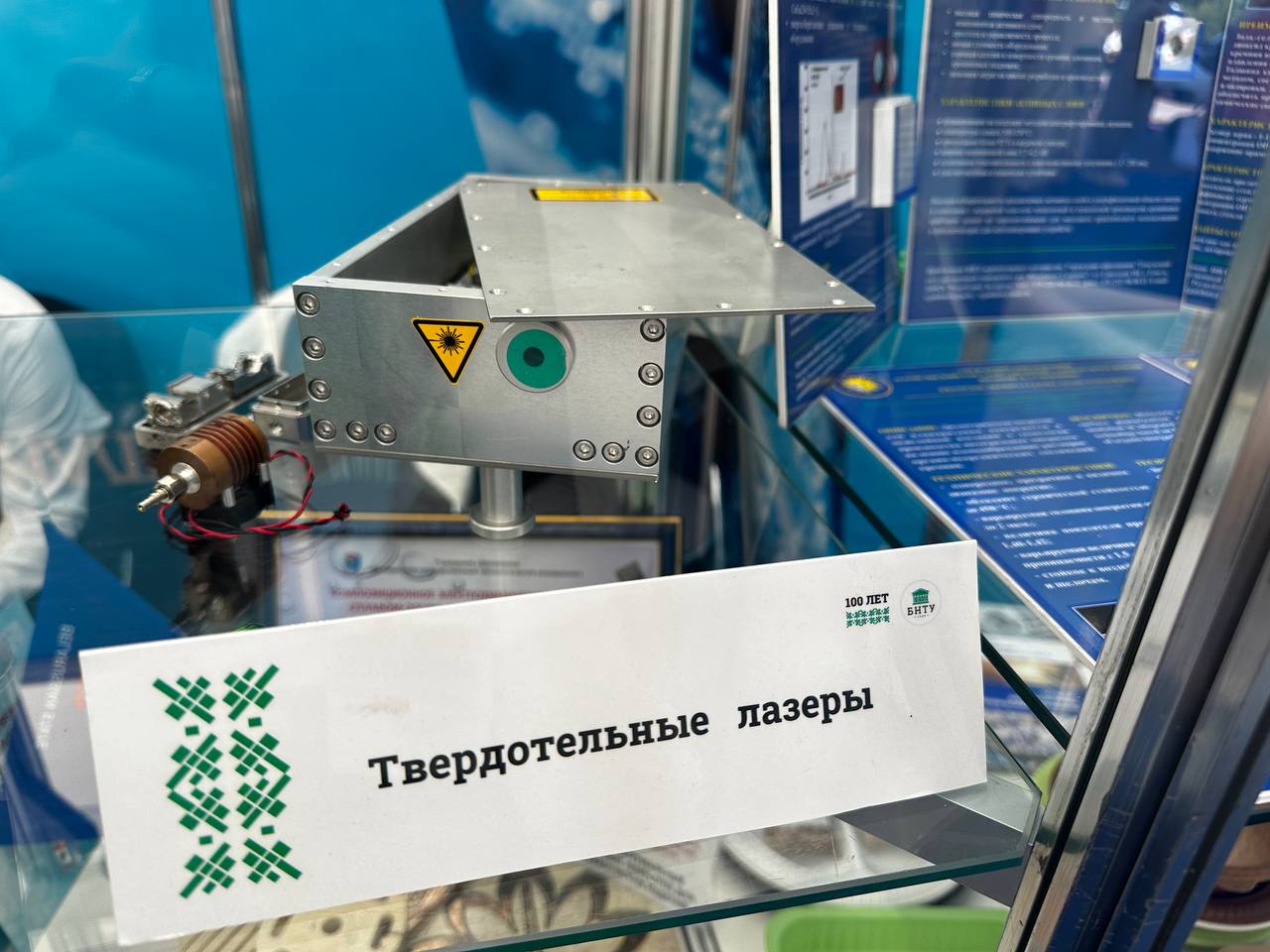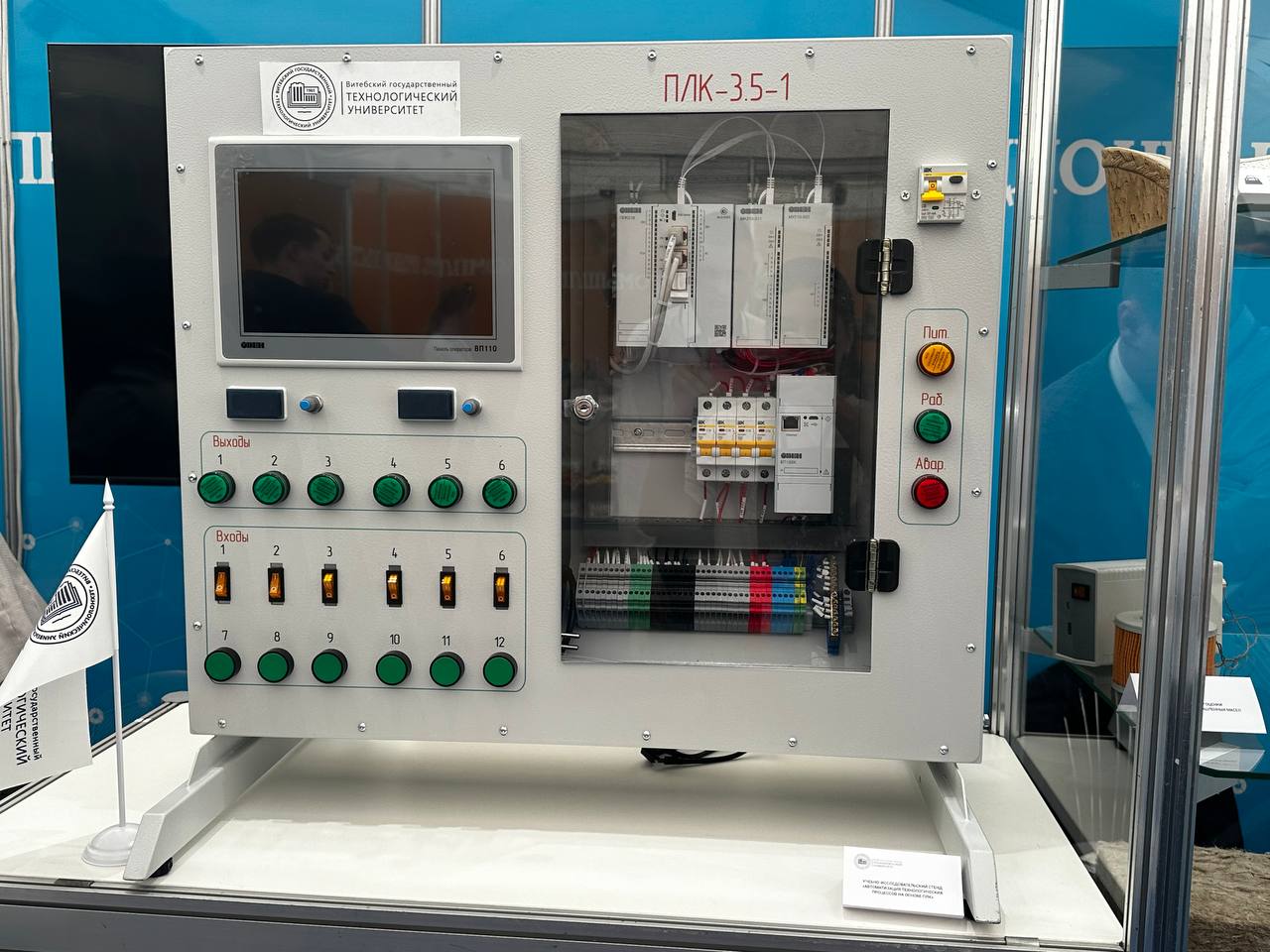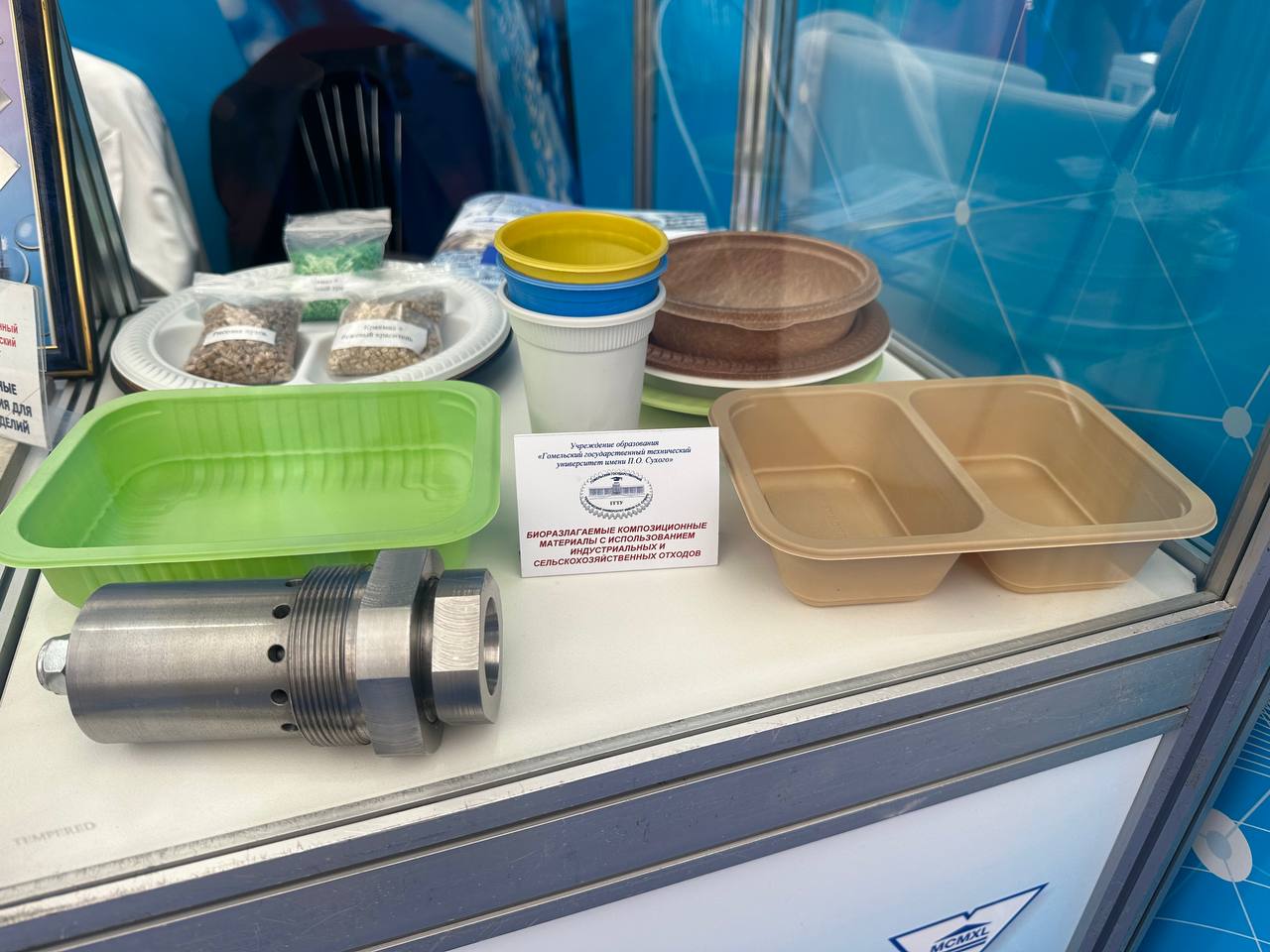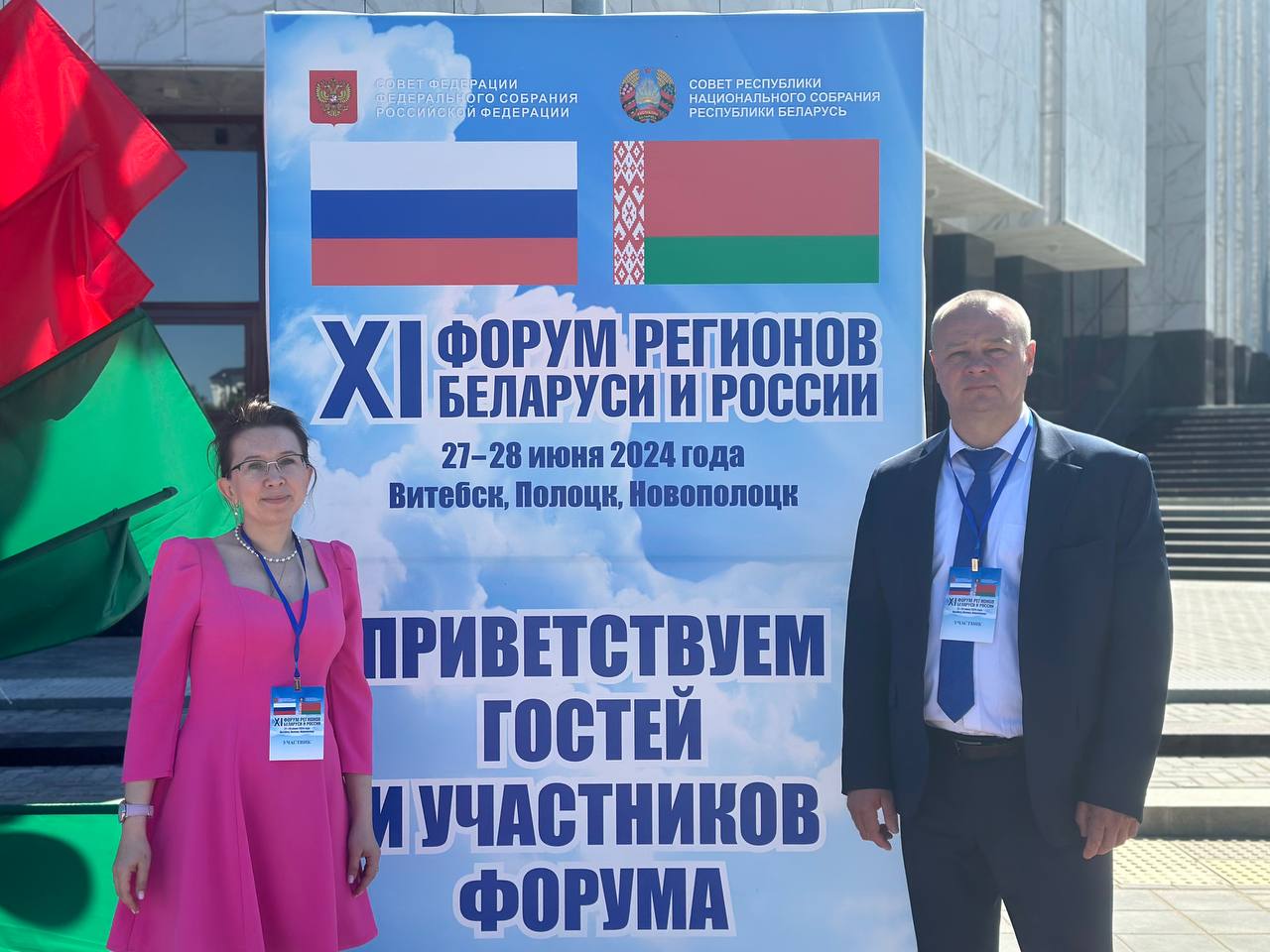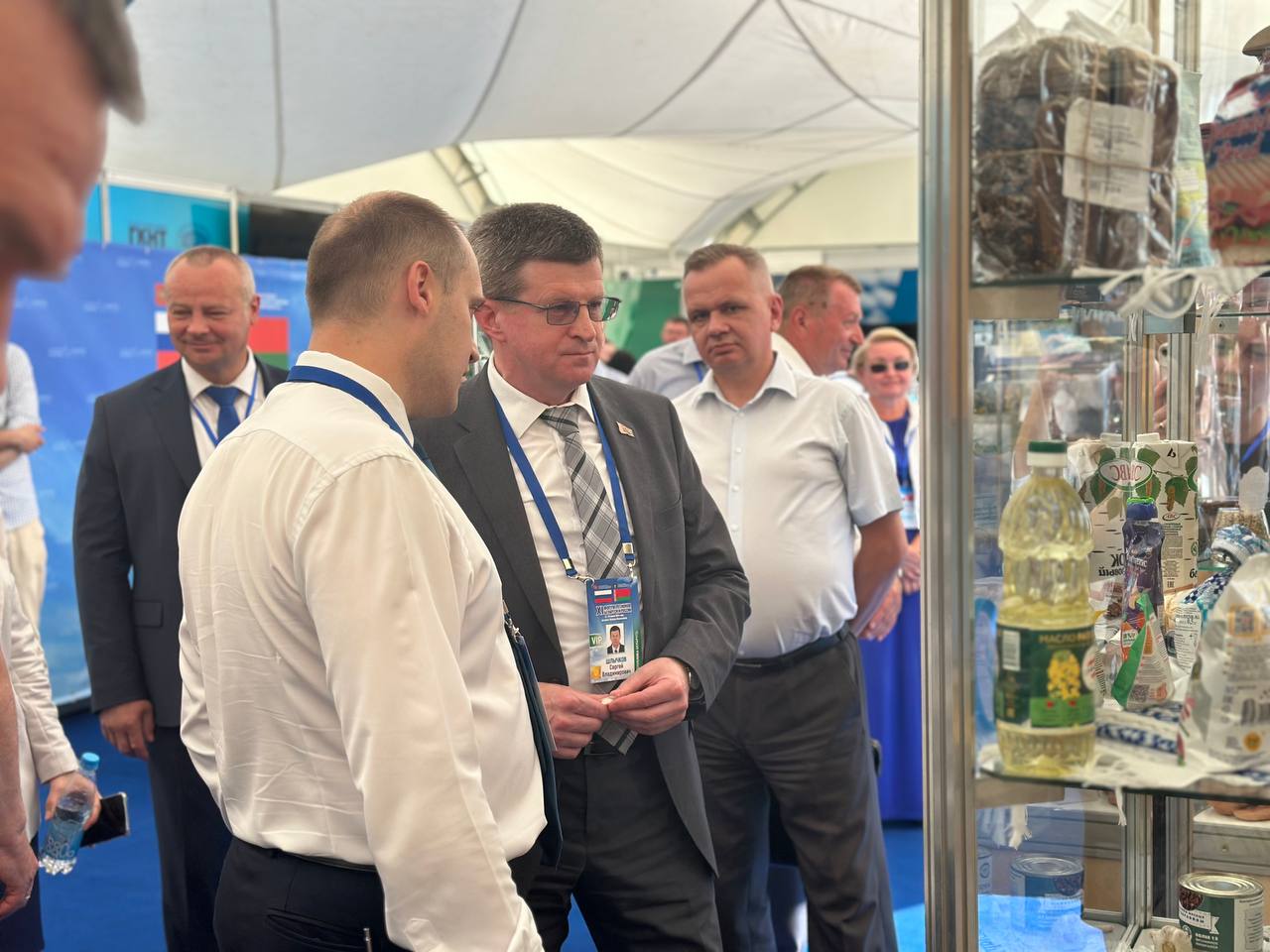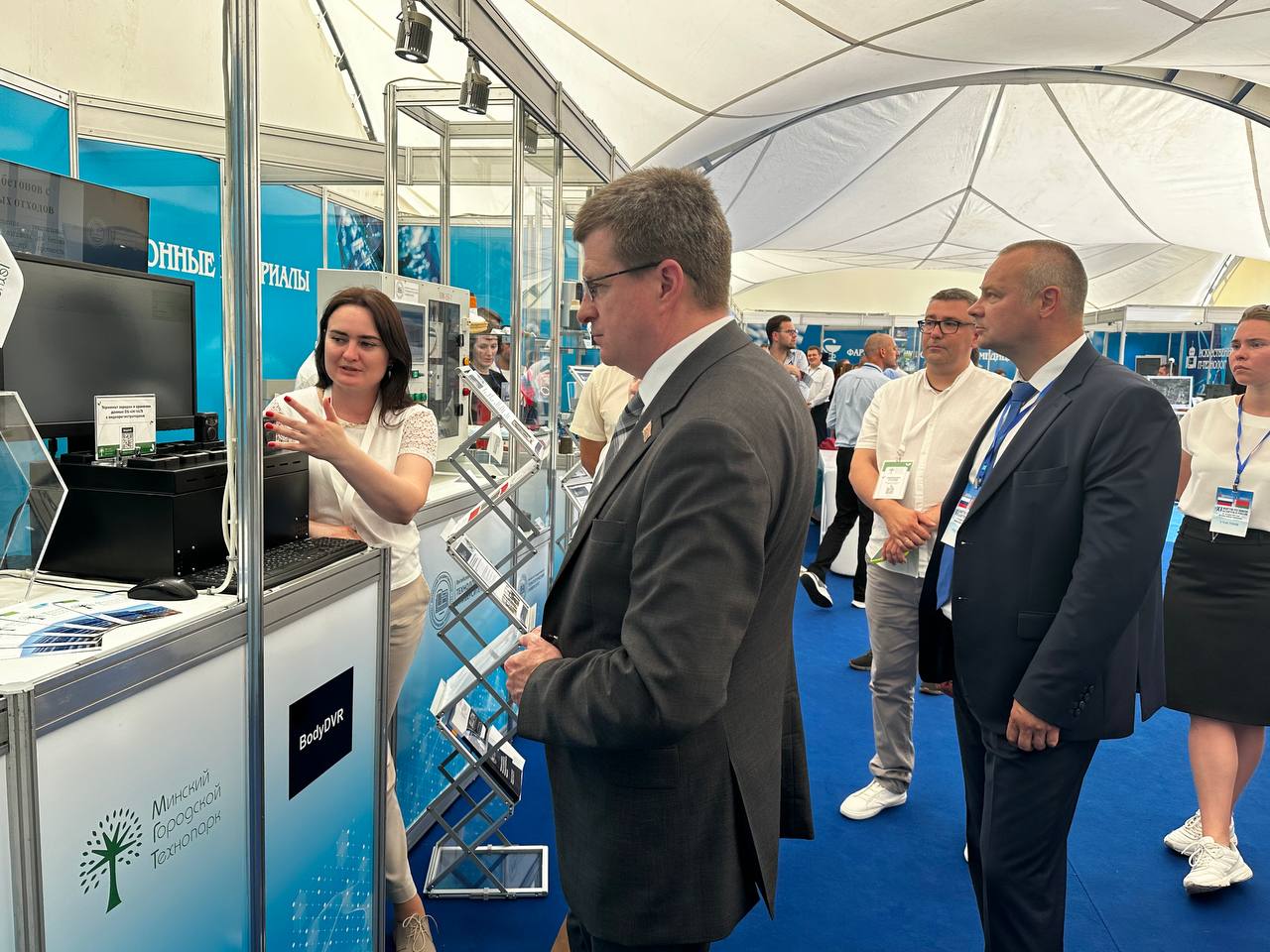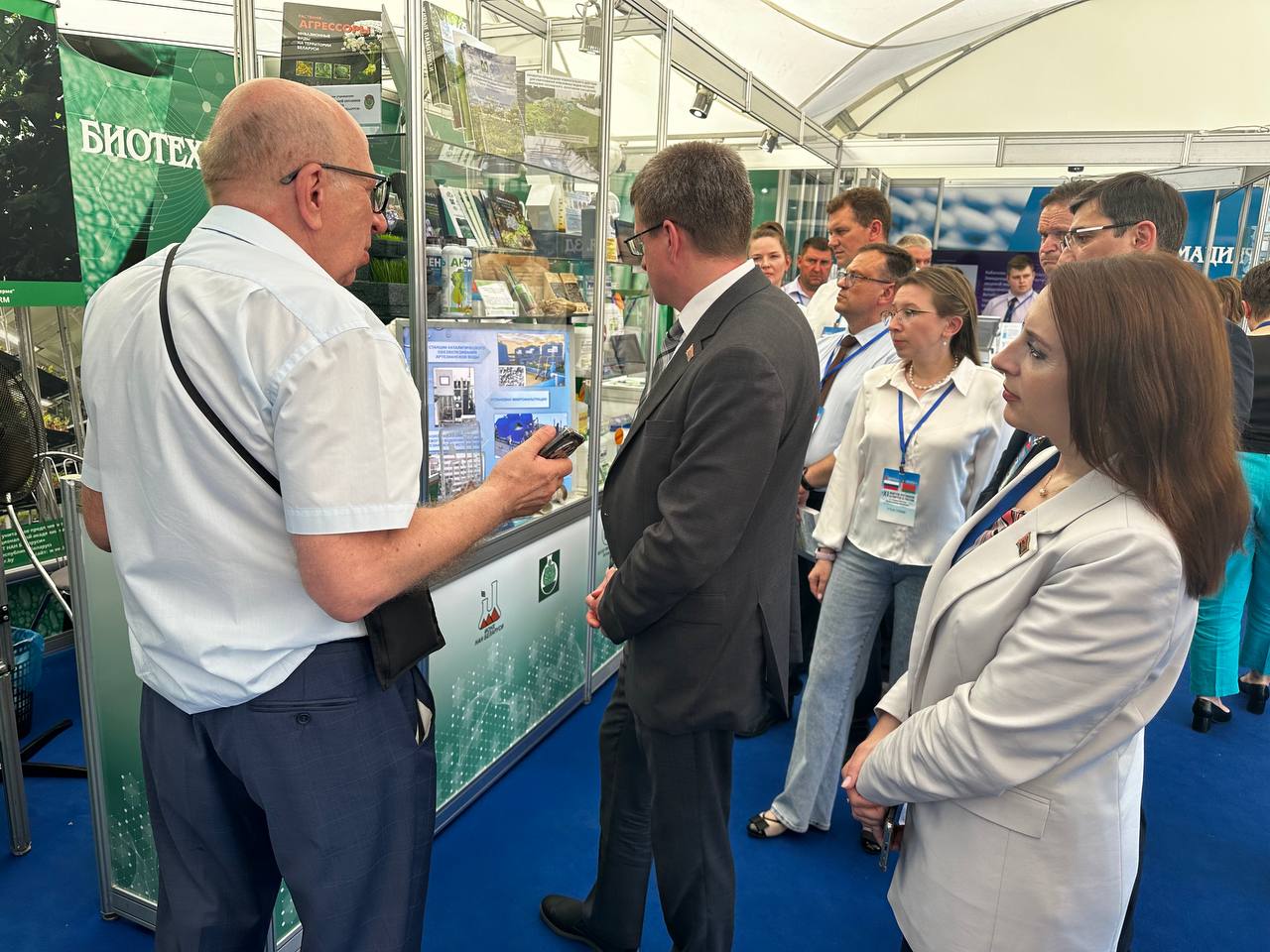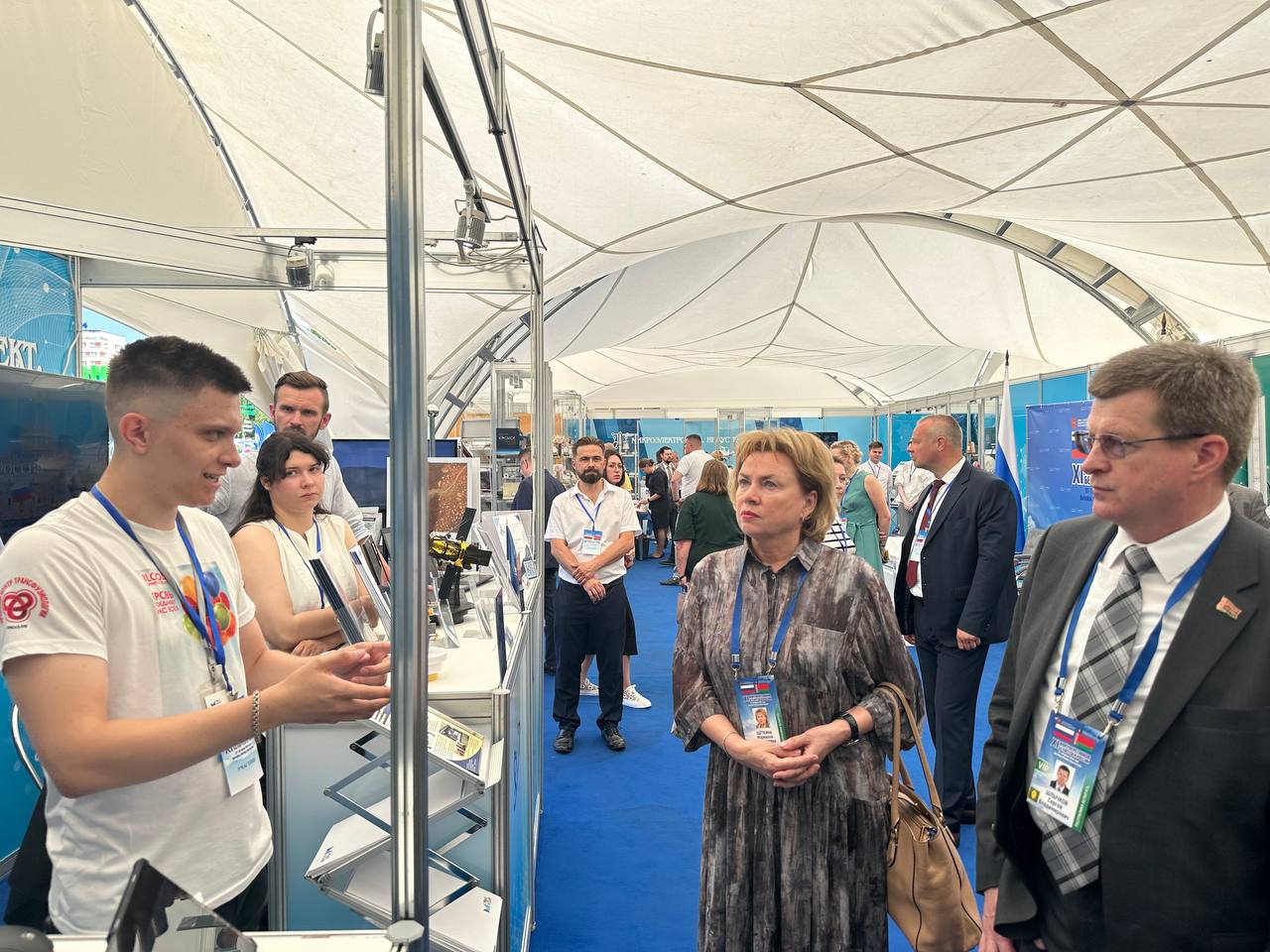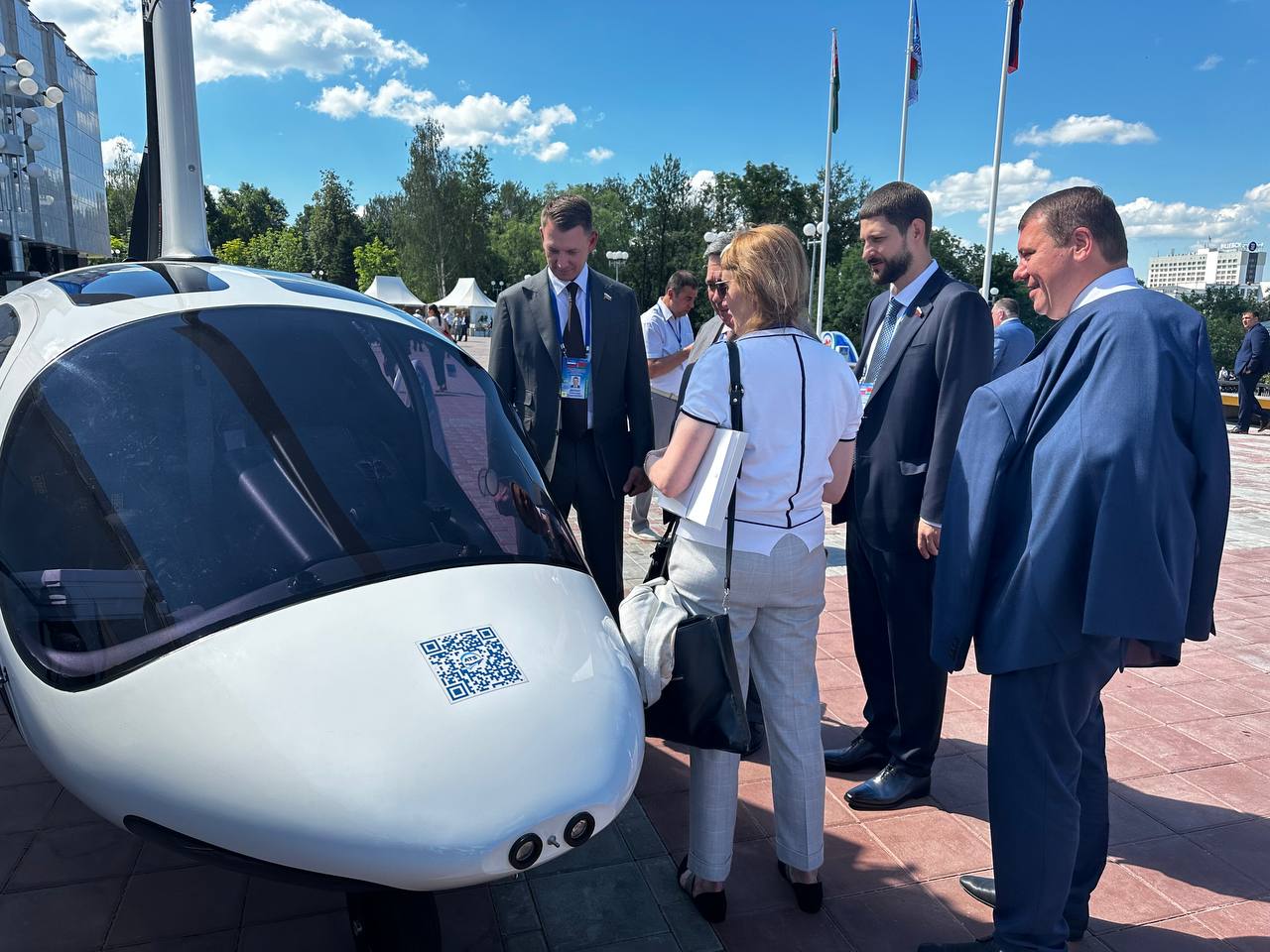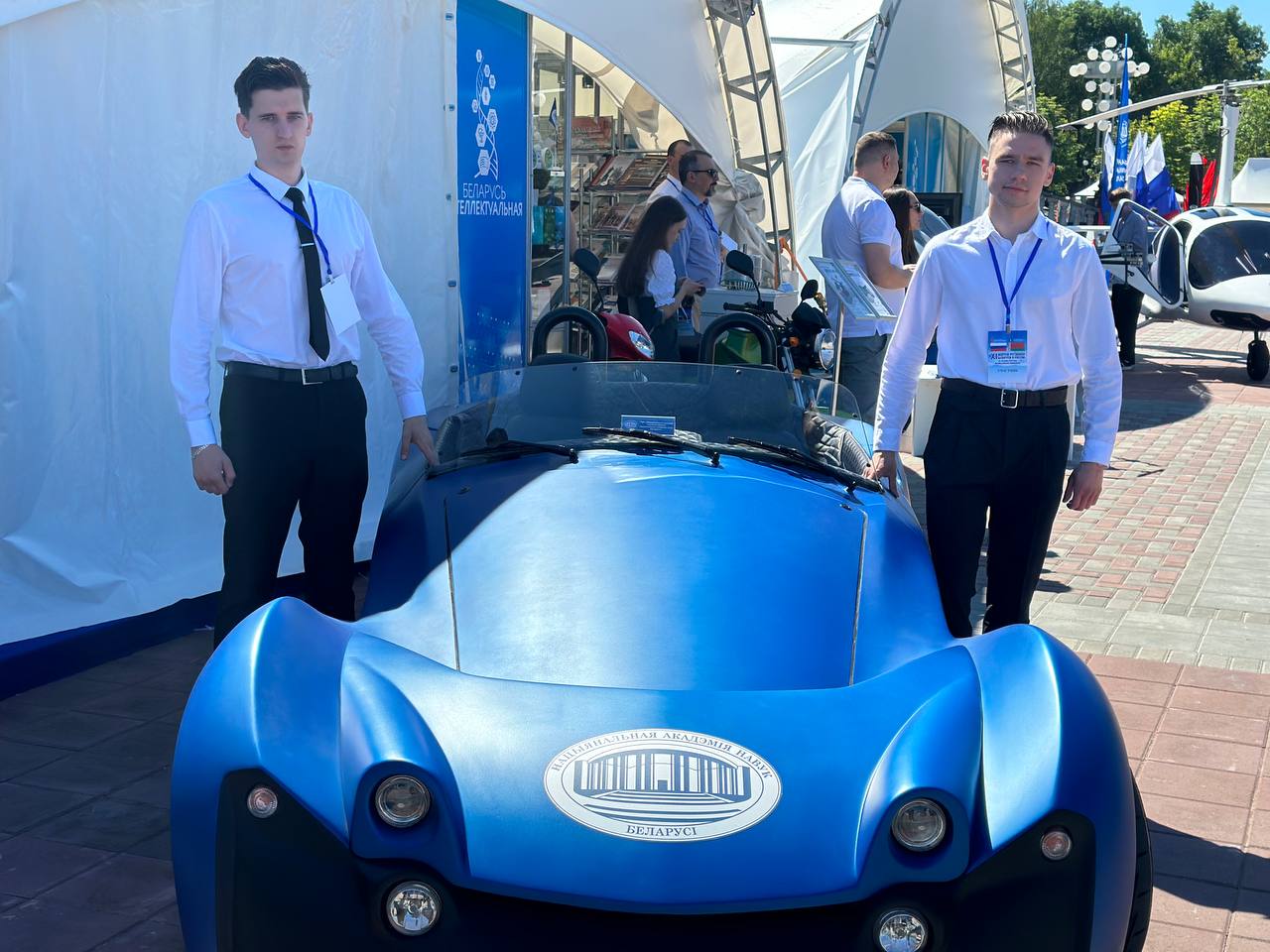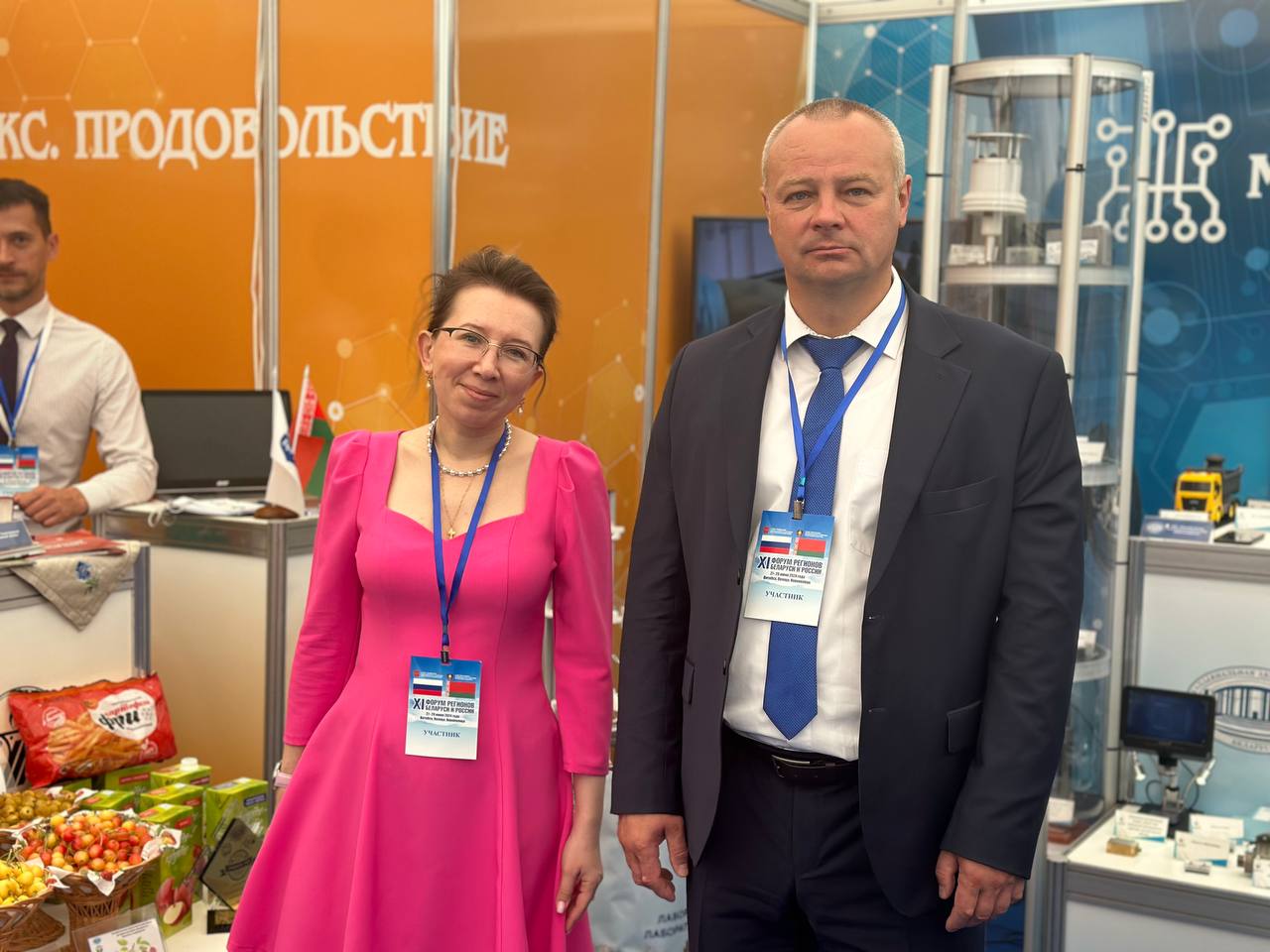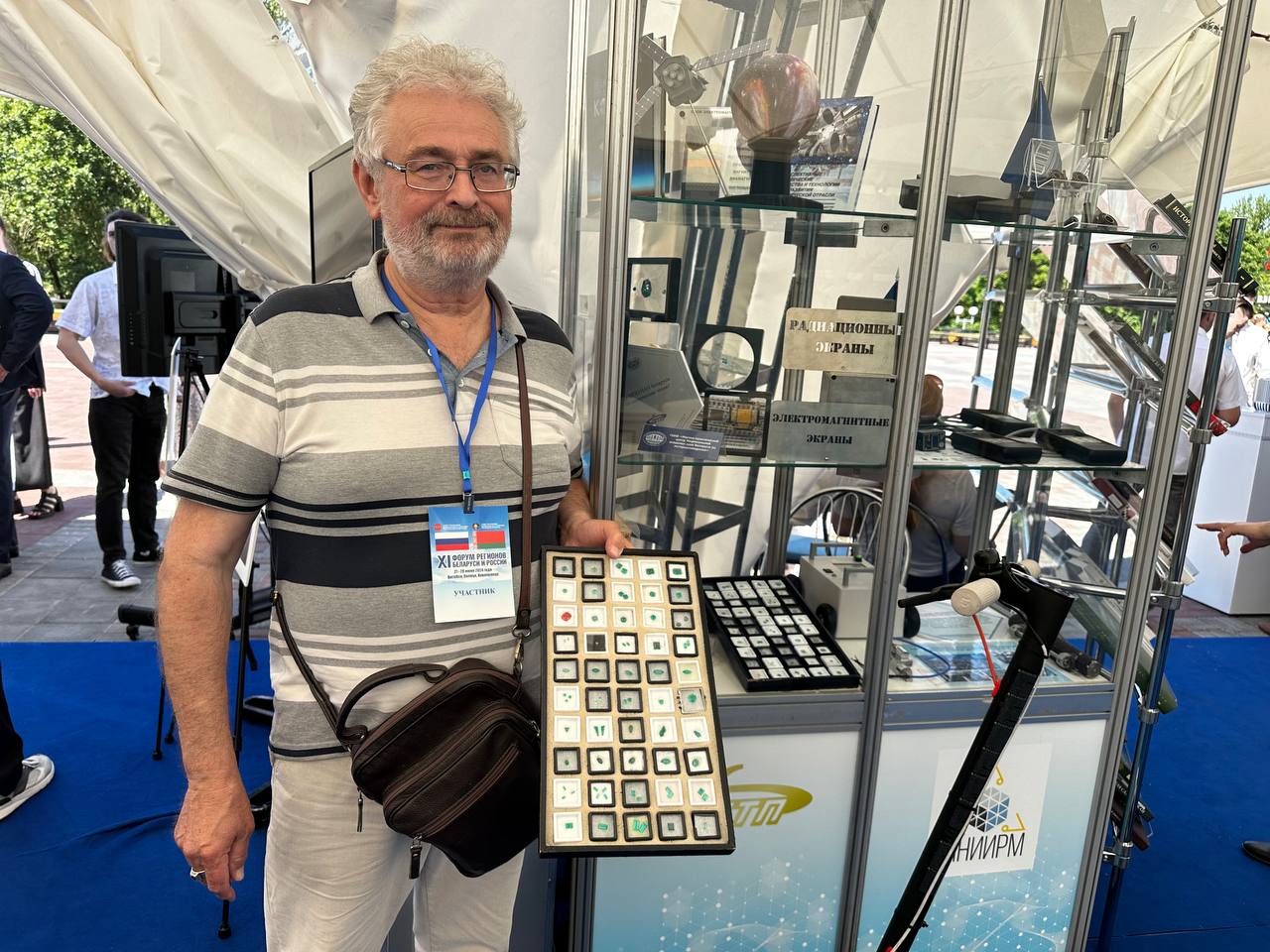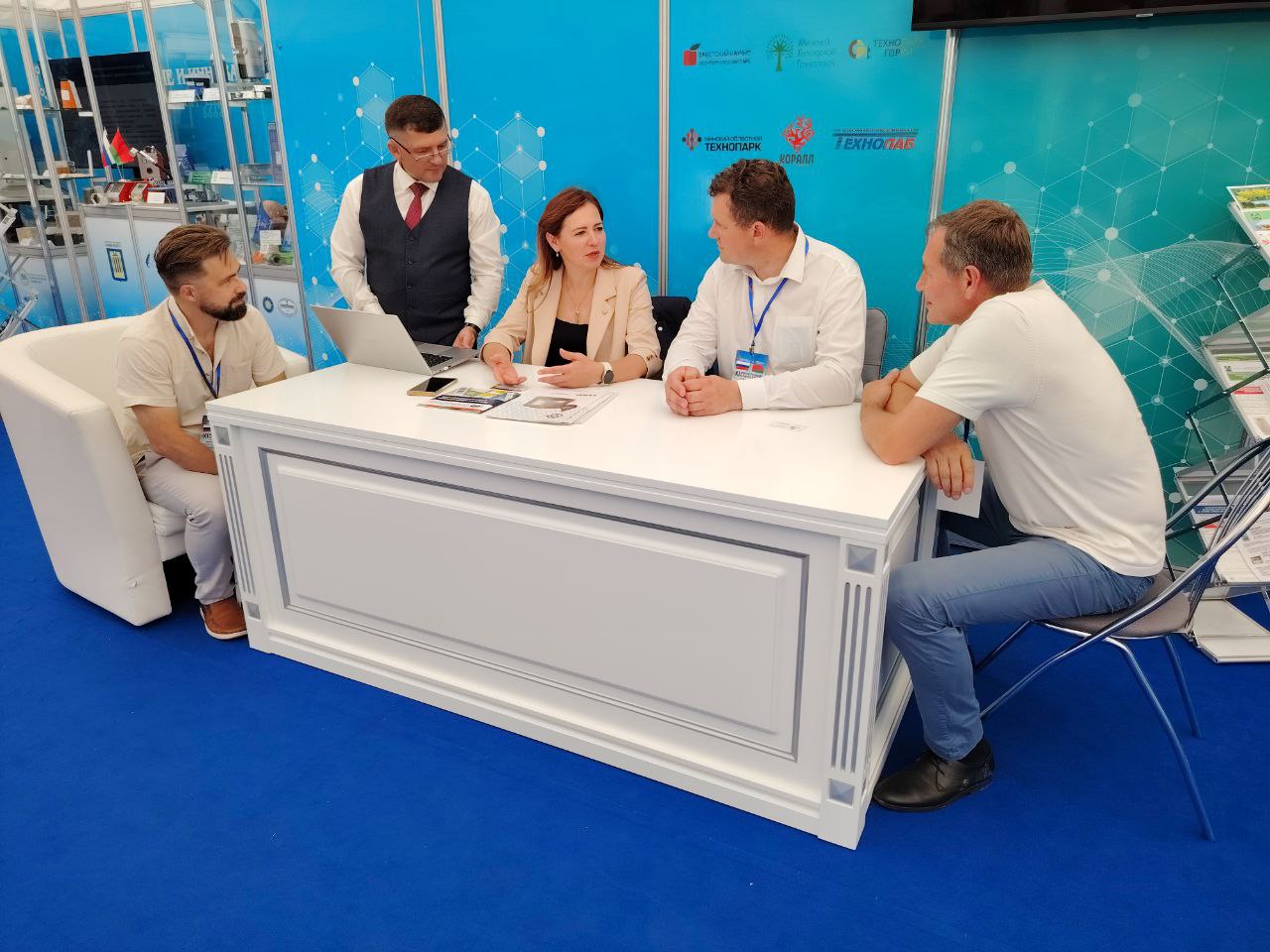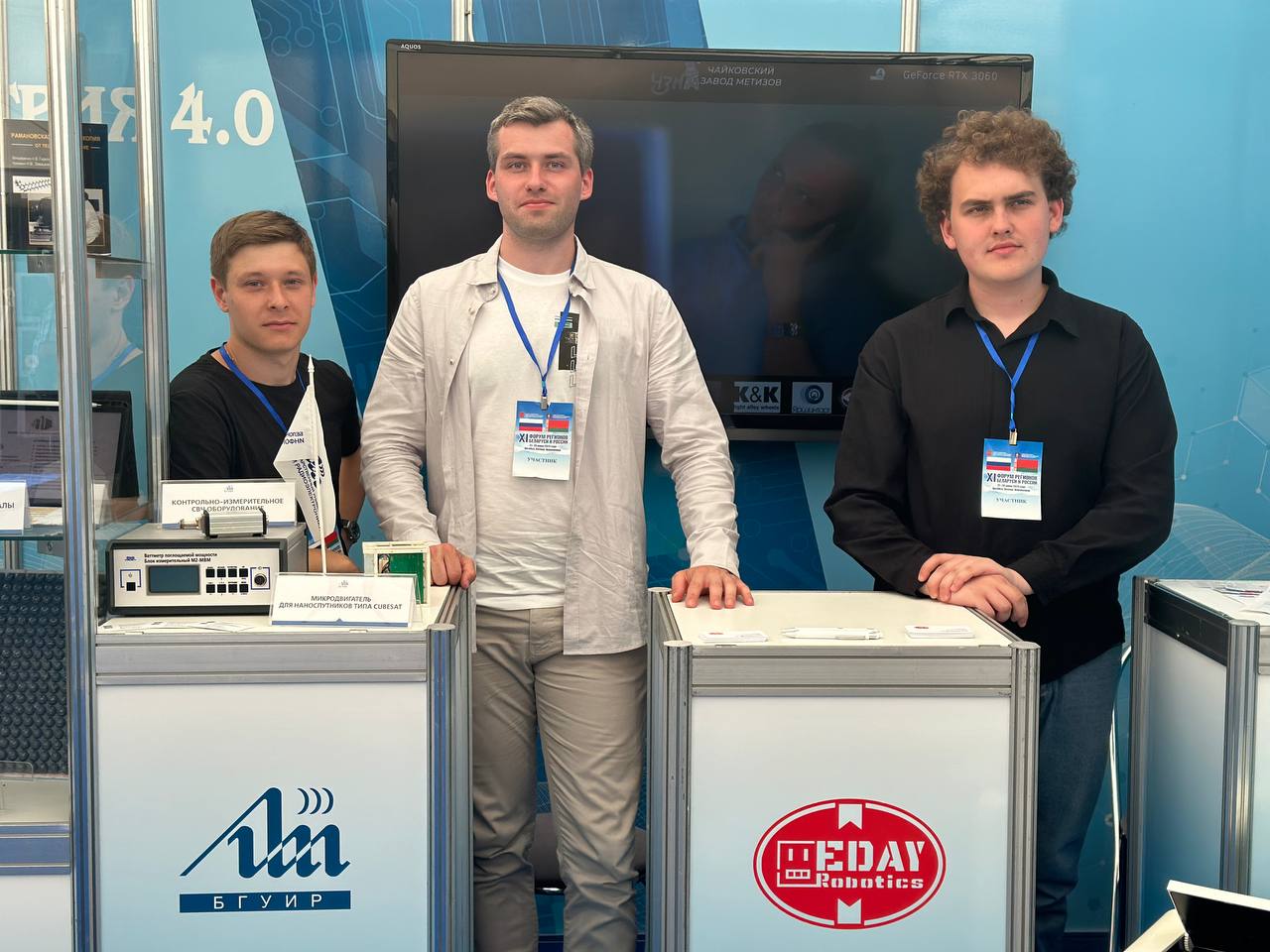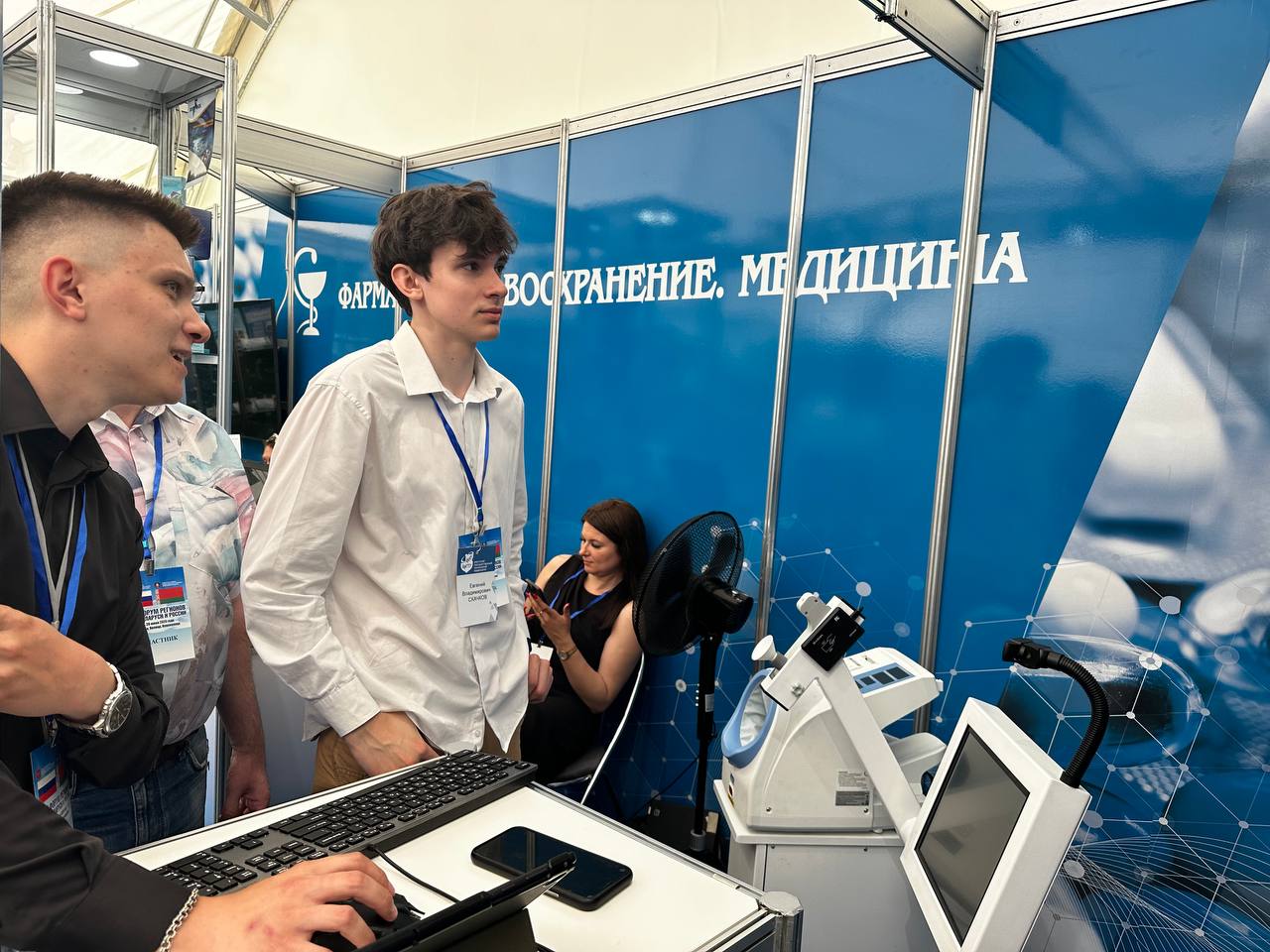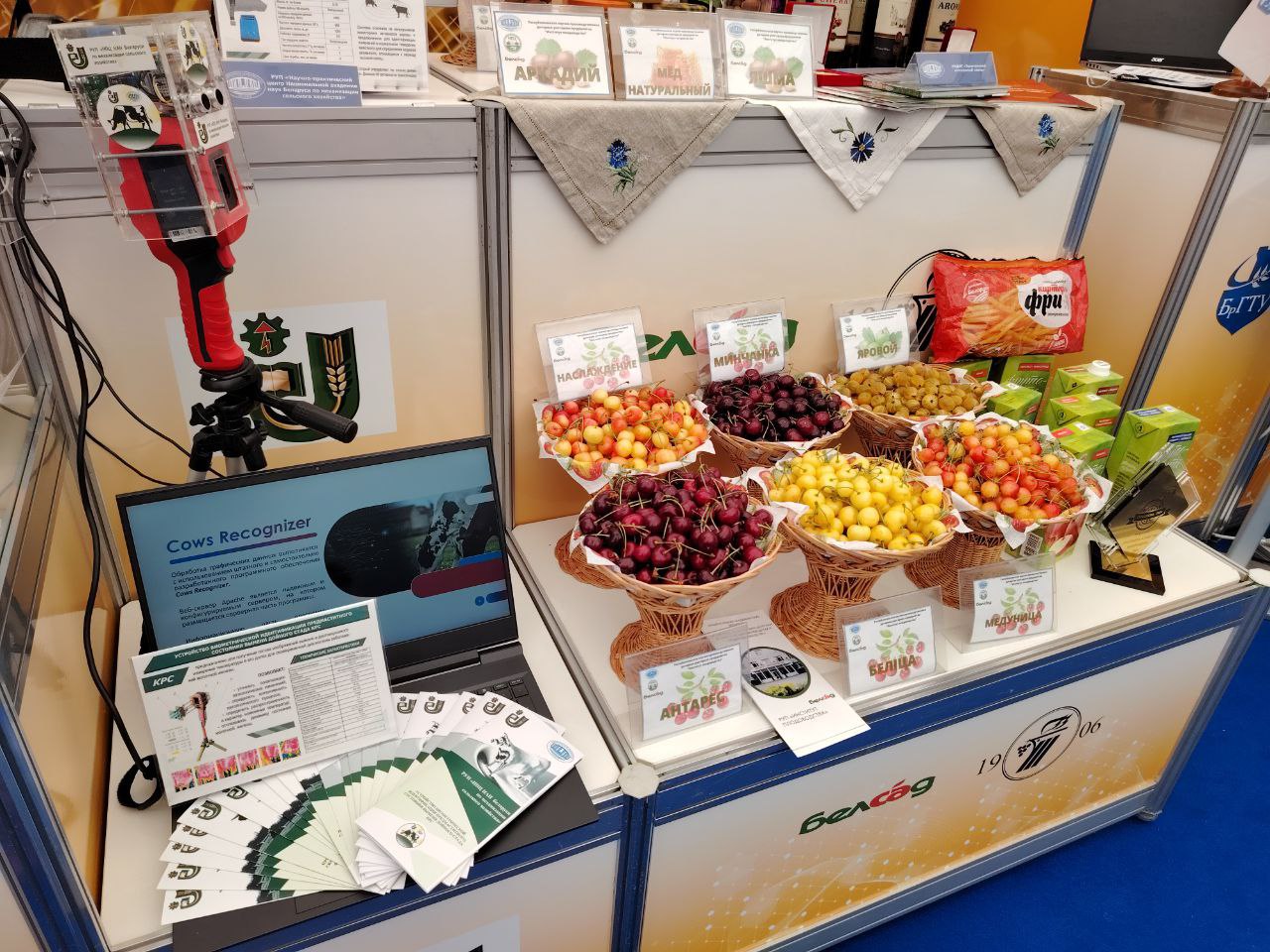The Belarusian Institute Of System Analysis And Informational Support Of Scientific And Technical Sphere
Exhibition within the framework of the XI Forum of Regions of Russia and Belarus (June 27–30, 2024, Vitebsk)
Document address: http://www.belisa.org.by/en/actions/exhibitions/b1963f45bca7c08c.html
27.06.2024
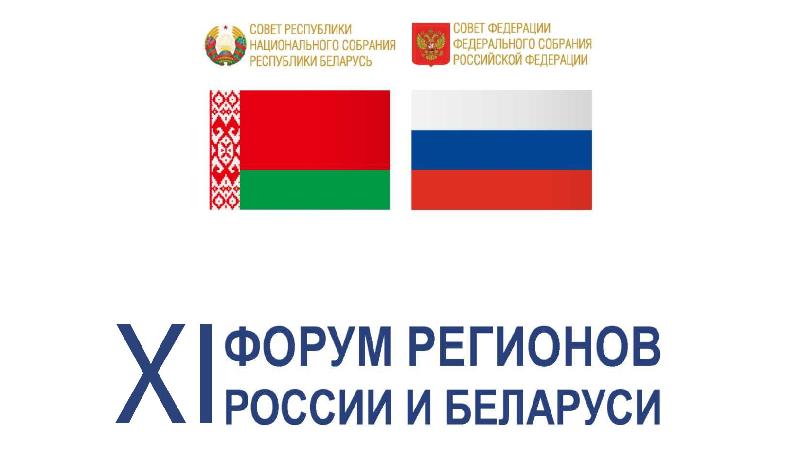
From June 27 to 30, among the numerous events of the XI Forum of Regions of Belarus and Russia, the exhibition "Intellectual Belarus" was held in Vitebsk, which demonstrated to visitors the latest developments and current achievements of science and technology.
The organizer of the collective section of scientific and technical developments was the State Committee on Science and Technology of the Republic of Belarus, and the exhibition operator was the state institution "Belarusian Institute of System Analysis and Information Support of the Scientific and Technical Sphere".
Scientific and technical developments of scientists from the National Academy of Sciences of Belarus, institutions of the Ministry of Education and residents of technology parks were presented in the form of full-scale samples, models, presentations and videos in such areas as artificial intelligence and IT technologies; microelectronics and industry 4.0; instrument making and innovative materials; biotechnology, ecology and nature management; pharmacy, healthcare and medicine; agro-industrial complex and food; electric transport and its basic components.
The exhibition featured samples of large-sized equipment: the Busel MKR unmanned aerial vehicle, the Agrodrone A60-X unmanned aircraft system, the TECEL model ultra-light autogyro (gyroplane) aircraft, the Red Line 01 and Red Line 02 electric motorcycles, and the ELECTRO ROADSTER electric vehicle.
Among the developments of the National Academy of Sciences of Belarus, the following were also presented:
bacterial keratinase for use in cosmetology. Keratinase is a specific type of proteolytic enzymes for the hydrolysis of insoluble keratin. Keratinase acts selectively, breaks down poorly soluble scleroproteins of keratinized skin epithelium, providing a soft exfoliating effect, weakens the adhesion of corneocytes, providing transepidermal delivery of active components to the deep layers of the skin ( State Scientific Institution "Institute of Microbiology of the National Academy of Sciences of Belarus");
an experimental unit for ultraviolet disinfection of milk, designed for disinfection (pasteurization) of raw milk in order to ensure its microbiological purity and preserve its quality characteristics. The unit does not affect the chemical composition of milk, and allows energy costs to be reduced by 2.5-3 times compared to conventional processing methods ( State Scientific Institution "Center for LED and Optoelectronic Technologies of the National Academy of Sciences of Belarus");
Unmanned aerial systems of aircraft and multirotor types, equipped with a special target load, including hyperspectral and multispectral cameras for early diagnostics of weakening and diseases of coniferous stands. A prototype of the hardware and software complex "BAK-Les", based on the serial UAV "Busel M-50" and the multirotor UAV "Gexacopter", equipped with a special target load, including a 140-channel hyperspectral and 40-channel multispectral cameras. The complexes are designed for prompt diagnostics
and detection of early signs of weakening of forest stands due to narrow channels located in the near and middle IR range of the electromagnetic spectrum (State Scientific Institution "Institute of Experimental Botany of the National Academy of Sciences of Belarus");
a hardware and software complex for hyperspectral scanning, designed to conduct research in the field of application of hyperspectral technologies in precision agriculture and development of hyperspectral information databases necessary for remote express diagnostics of agricultural objects and final products in the conditions of the Republic of Belarus. Data is obtained by scanning samples under the registration line of the hyperspectral camera. It is possible to simulate various spectral compositions of radiation incident on the object and illumination geometry at vertical and azimuthal angles. The software provides control of all automated functions of the stand, including obtaining hyperspectral images, their analysis, registration in the database and determination of the degree of coincidence of newly obtained images with previously registered ones (State Scientific and Production Association "Optics, Optoelectronics and Laser Technology");
portable medical device — cardiac recorder, designed to record one lead of the electrocardiogram, photoplethysmogram, blood pressure, heart rate and heart rate variability indicators and blood oxygen saturation level at the request of the patient (client). The compact and lightweight portable medical device is capable of recording and transmitting high-resolution ECG
in pseudo-real time mode to the user's smartphone (tablet) for more than 2 days, and from there to medical personnel with the ability to provide feedback (State Scientific Institution "Institute of Physiology of the National Academy of Sciences of Belarus") .
Among the developments of Belarusian universities were presented:
bitumen flax from waste petroleum products for road construction. It is intended for use as a waterproofing corrosion-resistant material for repairing roads and bridges. It is also used in the composition of binders of mastics and primers for sealing cracks, as a component of asphalt concrete mixtures, as a component of liquid boiler fuel. The use of waste petroleum products as a feedstock ensures a significant reduction in the costs of producing flax and their lower cost compared to imported analogues, and also contributes to environmental protection (Belarusian State University);
highly stable pulsed laser emitter with longitudinal diode pumping. It is used as the main components for the production of special-purpose equipment and devices at Peleng JSC. The systems use unique diode pumping schemes, which allows generating radiation in a wide spectrum range and in various modes without limitation by the quantum defect between the pumping and generation wavelengths. The uniqueness of the development lies in its significantly lower cost compared to foreign analogues and higher radiation stability in a wide temperature range (Belarusian National Technical University);
educational and research stand "Automation of technological processes based on a programmable logic controller (PLC)". The development allows to improve the quality of training specialists for knowledge-intensive industries; to design, simulate and program systems built on the basis of modern instrument automation with "field level" equipment (sensors and sensors, working bodies), other control systems (of various manufacturing companies) and production process control systems based on specialized dispatch control systems of the SCADA type (UO "Vitebsk State Technological University");
bioresorbable composite coatings — polylactidine encapsulated halloysite tubes on magnesium alloys. Medical materials intended for the manufacture of biodegradable implants for bone tissue reconstruction and stenting in traumatology, orthopedic and cardiovascular surgery. Advantages: do not require repeated surgical intervention to remove or replace the implant, which is achieved by its gradual controlled biodegradation; the use of natural nanomaterials as carriers of corrosion inhibitors and medical preparations in the composition of the composite coating on magnesium alloys allows for a self-healing effect and active antibacterial protection (UO "Belarusian State Technological University").
The BNTU Polytechnic Scientific and Technological Park presented at the exhibition vascular prostheses (designed to replace, bypass or create a shunt between segments of the human vascular system) and a biological heart valve endoprosthesis (designed for implantation during surgical treatment of congenital and acquired aortic valve defects).
During the exhibition, participants in the collective section signed 9 contracts for the supply of products, 1 protocol of intent, 3 contracts and 2 agreements on scientific and technical cooperation.
Complete or partial reproduction of the given data is allowed with reference to (with hyperlink for Internet) the source
